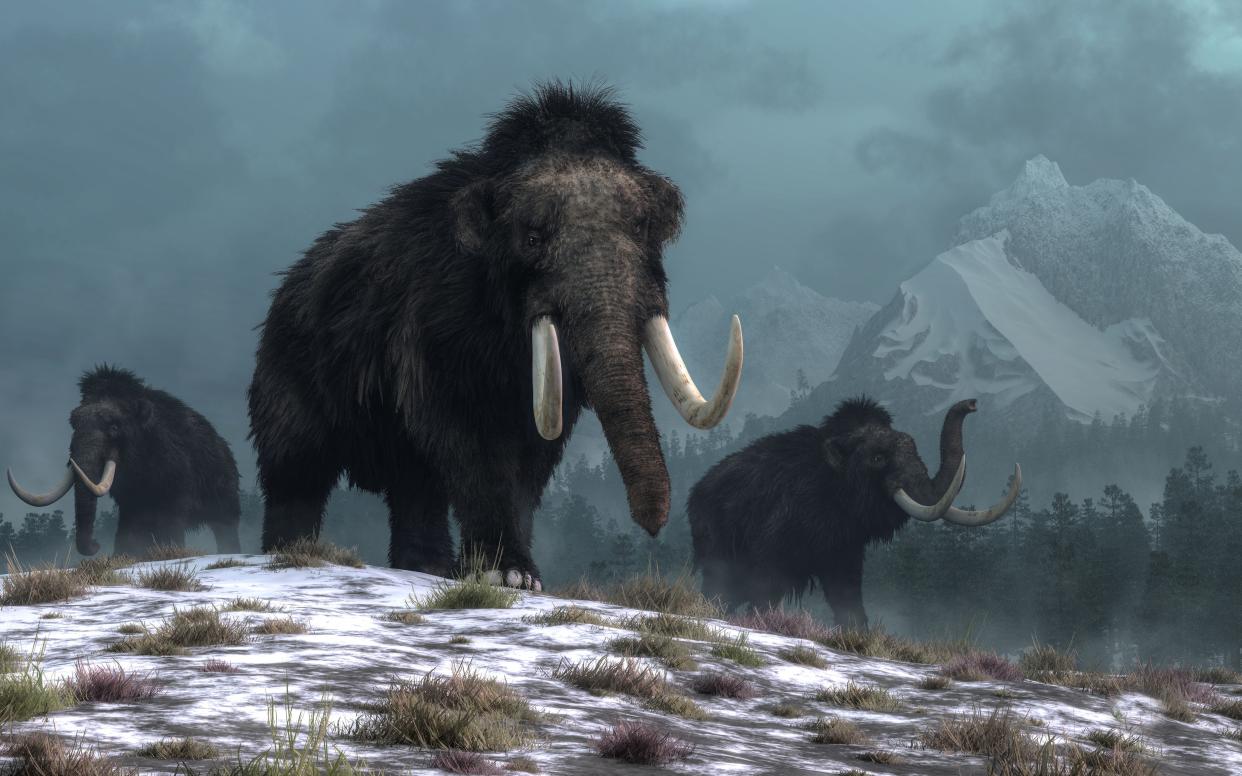Climate change extinguished woolly mammoths, a warning for our time: study
Researchers have isolated the real reason woolly mammoths went extinct.
Wait for it….
It’s climate change. And it has implications for the way we humans are conducting ourselves on the planet today, scientists said in a new study.
The elephants’ hairy ancestor-cousin roamed the earth for 5 million years, vanishing just 4,000 years ago. Scientists have spent decades researching why, even as others attempt to resurrect the ancient species with DNA. As it turned out, the massive mammals’ vegetation got wiped out by melting glaciers, according to scientists at Cambridge University.

It has long been known that woolly mammoths and early humans coexisted for at least 2,000 years. People hunted them for food, constructed shelters and harpoons from their bones and tusks, honored them in cave art, and — 30,000 years ago — made at least one flute out of mammoth bone.
In a 10-year project, geneticists analyzed environmental DNA, revealing that melting icebergs created marshes, rivers and lakes, which reduced the area available for the mammoths’ main staple, the ample vegetation of the time. Eventually there was not enough to sustain an animal the size of a double-decker bus.
Researchers analyzed urine, feces and skin cells from soil samples collected near sites of mammoth remains in the Arctic over 20 years, publishing their results Wednesday in the journal Nature.
“We zoomed into the intricate detail of the environmental DNA and mapped out the population spread of these mammals and show how it becomes smaller and smaller and their genetic diversity gets smaller and smaller too, which made it even harder for them to survive,” wrote Dr. Yucheng Wang, a research associate at the University of Cambridge’s Department of Zoology, in a statement.
Researchers used an advanced new technology known as shotgun DNA sequencing, which skirts the need for extracting genetic material from bones or teeth for constructing profiles of ancient life building blocks. It’s the same technology used to test sewage for traces of COVID-19, the University of Cambridge said.
Humans had long been assumed as the culprits in mammoths’ extinction, but the new findings negate that theory, said lead author Eske Willerslev, a fellow of St John’s College at the University of Cambridge who is also director of the Lundbeck Foundation GeoGenetics Centre at the University of Copenhagen.
As the climate got wetter, melting glaciers formed lakes, rivers and marshes, changing the ecosystem and reducing the biomass of vegetation until it couldn’t sustain the mammoth herds.
“We have shown that climate change, specifically precipitation, directly drives the change in the vegetation — humans had no impact on them at all based on our models,” Wang said.
“Scientists have argued for 100 years about why mammoths went extinct,” Willerslev said. “Humans have been blamed because the animals had survived for millions of years without climate change killing them off before, but when they lived alongside humans they didn’t last long, and we were accused of hunting them to death.”
Woolly mammoths weathered several ice ages, but for the earlier ones they had time to adapt when ice and food supply waned, Willerslev said.
“We have finally been able to prove was that it was not just the climate changing that was the problem, but the speed of it that was the final nail in the coffin — they were not able to adapt quickly enough when the landscape dramatically transformed and their food became scarce,” Willerslev said.
However, he emphasized, this does not let humans off the hook vis a vis climate change, calling it a “stark lesson from history” that highlights the unpredictability of climate change.
“Once something is lost, there is no going back,” Willerslev warned. “It shows nothing is guaranteed when it comes to the impact of dramatic changes in the weather. The early humans would have seen the world change beyond all recognition. That could easily happen again, and we cannot take for granted that we will even be around to witness it. The only thing we can predict with any certainty is that the change will be massive.”
